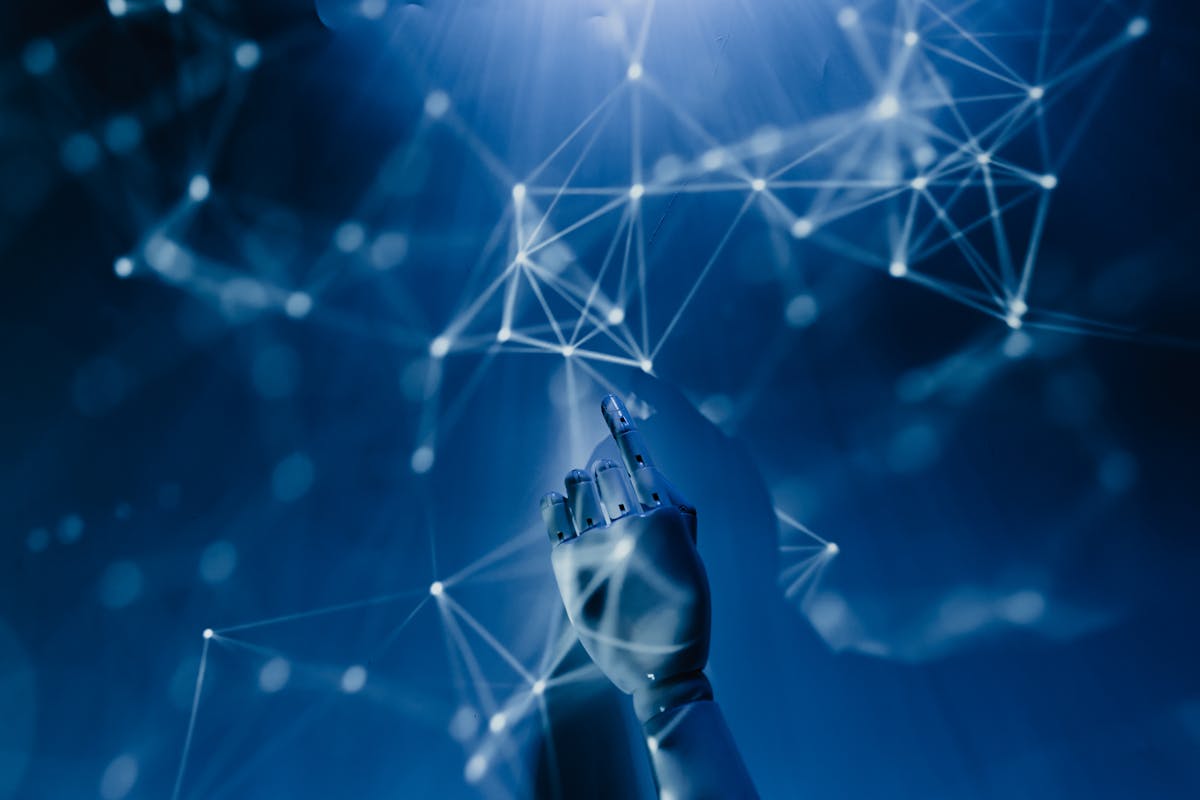Ethical Liability in AI-Generated Contracts
When algorithms draft contracts faster than lawyers, who bears responsibility for the terms they generate? In 2025, AI-driven contract systems are not just tools—they’ve become silent co-authors of legal obligations, shaping deals, employment clauses, and even marriage agreements without human oversight. The ethical liability question is no longer theoretical; it’s the frontline of legal reform.

Across industries, AI drafting systems promise efficiency—but they also introduce untraceable biases, data interpretation errors, and ownership ambiguity. When an AI platform inserts a clause that favors one party, who is at fault—the developer, the user, or the AI itself? Legal experts warn that the absence of human accountability may lead to a silent crisis of trust in contractual law.
The Rise of Autonomous Legal Drafting
Autonomous contract generation started as a novelty: a way for startups to automate NDA templates or loan forms. Now, AI platforms negotiate and finalize multimillion-dollar deals using predictive analytics and adaptive risk scoring. These systems analyze data from thousands of historical agreements, learning how to construct clauses that optimize for profit or protection—sometimes at the expense of fairness.

For example, corporate insurance providers now use AI tools to draft client coverage contracts based on behavioral data. The software predicts which clients are likely to dispute terms and modifies clauses to limit exposure. While this optimization increases profitability, it subtly undermines the principle of equal negotiation power—a foundation of legal fairness.
Accountability Without a Human Author
The key dilemma is authorship. A human lawyer can defend intent; an AI cannot. When an algorithm inserts a restrictive clause or misclassifies a party’s liability, no single entity can be held responsible. The AI did not “intend” harm—yet its actions have tangible consequences. Courts worldwide are now forced to interpret whether “intent” can exist without consciousness.

This lack of clear attribution has led to what scholars call “distributed liability”—where responsibility diffuses across developers, users, and platforms. In practical terms, no one fully owns the mistake. This not only frustrates courts but also poses a broader risk: contracts may become legally binding documents without a traceable human author.
Ethical Design and Legal Safeguards
Regulators in the EU and U.S. are beginning to mandate transparency logs in automated contract systems—requiring AI vendors to store every decision-making trace. Yet even transparency doesn’t guarantee fairness. Algorithms trained on biased data reproduce inequities with mathematical precision. Ethical design must now go beyond compliance—it must encode moral reasoning into code.

The next phase of legal innovation will depend on hybrid governance—where AI assists, but human lawyers retain interpretive authority. It’s not about rejecting automation but redefining agency: the power to decide must remain human, even when AI drafts the words.
Algorithmic Bias and the Illusion of Objectivity
AI-generated contracts are often portrayed as “objective” because they rely on data rather than human judgment. But this perception is misleading. Algorithms inherit the same cultural, financial, and legal biases as the datasets used to train them. When a model learns from historical contracts written during eras of gender or racial disparity, it unintentionally reproduces those inequities into modern clauses.

For instance, predictive models trained on historical lending or employment contracts may encode systemic disadvantages. A clause that once seemed “industry standard” could now be a discriminatory remnant, perpetuated by automation. Thus, the myth of neutrality in AI drafting not only masks bias but institutionalizes it with mathematical precision.
Who Bears the Blame When AI Fails?
When an AI-generated contract results in a legal dispute, tracing fault becomes a forensic challenge. The AI doesn’t “intend” harm, yet its automated decision-making causes financial or ethical damage. Developers might argue they only supplied a tool. Businesses may claim they relied on technology in good faith. The user might insist they never understood the model’s mechanics.

This triangular diffusion of blame reveals the cracks in our legal architecture. Courts are struggling to apply doctrines like negligence, product liability, or duty of care to an algorithmic actor. The result is an emerging “responsibility gap” — where harm exists, but no one is legally answerable. Philosophers of law argue this could redefine the entire concept of liability in the digital era.
AI as a Contractual Entity
Some legal theorists propose that highly autonomous systems should be recognized as “electronic persons.” This would allow them to bear limited liability, much like corporations. However, this approach risks legitimizing the moral separation between humans and machines. Assigning “personhood” to algorithms could weaken the accountability chain rather than strengthen it.

As technology advances, lawmakers are exploring hybrid legal frameworks — ones where responsibility can be shared dynamically between AI systems, developers, and end users. For instance, in the European Union’s proposed AI Act, high-risk systems will require detailed audit trails, algorithmic transparency, and human oversight checkpoints before execution.
Contractual Ethics in an Era of Automation
Traditional contract law is built on consent, awareness, and intent — three principles automation disrupts. When AI drafts an agreement, the signer may not fully understand which terms were generated, which were standard, and which were optimized by the algorithm. The human element of negotiation — empathy, fairness, and mutual understanding — risks being replaced by cold efficiency.

Ethical lawmaking in this new domain requires a rebalancing act: preserving innovation while maintaining accountability. Legal systems will need to integrate moral philosophy directly into software governance, creating a bridge between ethics and execution. Some experts suggest embedding “values by design,” where fairness principles are mathematically encoded into the AI’s operational framework.
Redefining Legal Trust
At its core, trust is the currency of all legal agreements. Without it, enforcement mechanisms crumble. AI drafting challenges that trust by introducing invisible intermediaries between the parties — algorithms that neither side can see nor fully control. Building transparency into these systems isn’t just good ethics; it’s necessary for the survival of contract law itself.

The push for explainable AI (XAI) aligns with this goal. If legal actors can understand how a model arrived at a specific clause or recommendation, accountability is restored. Transparency transforms AI from a “black box” into a verifiable legal instrument, reducing ambiguity while reinforcing justice.
The Legal Vacuum of AI-Generated Evidence
In modern litigation, contracts are not just agreements—they are evidence. When those documents are produced or influenced by AI, courts must determine how much credibility they deserve. Can an algorithmically drafted clause be cross-examined? Can intent be inferred from a pattern of machine learning outputs? These are not philosophical questions anymore—they are appearing in real courtrooms.

Legal analysts are developing new frameworks to evaluate digital authorship. If an AI system produces a flawed legal document that misleads a client or damages a party, should it be treated as a defective product or a professional malpractice? Each classification triggers a different set of liabilities and compensation pathways.
Emerging Global Standards for AI Contracts
Several jurisdictions are leading the race to standardize AI contract regulation. The European Union’s Artificial Intelligence Act mandates algorithmic accountability for high-risk applications—including contract generation. Meanwhile, the United States Federal Trade Commission has begun prosecuting firms for deceptive automation, applying consumer protection law to algorithmic misrepresentation.

These frameworks aim to create algorithmic transparency, requiring companies to document how models generate or modify legal clauses. Similar to how environmental law demands pollution disclosure, AI law now demands “decision traceability.” The legal future depends on whether these mechanisms can keep pace with rapidly evolving machine intelligence.
Case Study: The 2025 Arbitration Scandal
In late 2025, a major corporate arbitration case revealed that an AI drafting system had inserted one-sided clauses without human review. The resulting contracts unfairly restricted employee rights under arbitration agreements. When the issue surfaced, the company faced severe reputational and financial damage, despite claiming it had no intent to deceive.

The case sparked global debate on whether ignorance absolves accountability. Legal scholars concluded that organizations deploying AI systems must assume “strict liability” for outcomes, regardless of human oversight. This ruling established a new precedent: using AI doesn’t dilute legal responsibility—it amplifies it.
Human Oversight as a Legal Necessity
Automation promises speed, but it cannot replicate human discernment. Contractual fairness requires empathy, interpretation, and contextual judgment—traits AI lacks. Even the most advanced model cannot weigh the social consequences of a contractual term. For this reason, many experts are calling for “human-in-the-loop” mandates in all AI-driven legal processes.

A recent study by the International Bar Association found that hybrid workflows—where lawyers supervise AI-generated drafts—reduce contractual disputes by nearly 70%. This model preserves efficiency while maintaining ethical integrity. The lesson is clear: automation should empower human judgment, not replace it.
The Future of AI Liability Insurance
As legal exposure increases, insurance companies are introducing specialized “AI liability coverage.” These policies protect firms from damages arising out of algorithmic errors or negligence. Premiums depend on transparency levels, ethical safeguards, and human supervision protocols. In essence, compliance becomes the new currency of trust.

Industry analysts predict that by 2027, AI liability insurance will become as common as cybersecurity coverage. Law firms adopting transparent automation may enjoy reduced premiums, while those using opaque systems will pay higher rates. Thus, the insurance market itself is becoming a silent regulator of algorithmic ethics.
Case File: Algorithmic Negligence in Practice
In 2026, a law firm in Chicago faced disciplinary action after relying entirely on an AI drafting tool for client contracts. The system inserted outdated arbitration language that violated state employment regulations. The firm argued that the software had been certified and peer-reviewed—but the court ruled that delegating professional judgment to AI does not exempt liability.

This landmark decision redefined ethical obligations in the age of automation. The firm was required to retrain its legal staff in digital oversight and disclose AI use to all clients moving forward. It became a warning across the legal industry: automation without accountability equals malpractice.
AI Transparency Clauses: The Next Contractual Frontier
A growing number of companies are now including “AI transparency clauses” in their contracts, disclosing when algorithms contribute to drafting, negotiation, or enforcement. This builds confidence and aligns with upcoming global standards. Transparency is no longer a courtesy—it's becoming a contractual right.

Forward-looking organizations are adopting AI governance boards—internal ethics teams that audit algorithmic tools and assess compliance risks. These measures not only protect clients but also signal market maturity. In the AI economy, ethical credibility is a competitive advantage.
Bridging the Gap Between Law and Code
The ultimate challenge is philosophical as much as technical: how do we translate human moral reasoning into algorithmic logic? As legal AI systems evolve, so too must the ethical frameworks that guide them. Code cannot replace conscience—but it can be programmed to honor it. The fusion of law and machine ethics represents the next frontier of human governance.

Technology may automate the how of law, but humans must always define the why. Maintaining that boundary ensures justice remains human-centered—even in a world run by algorithms.
Key Takeaways
- AI is revolutionizing legal contracts, but liability must remain human.
- Distributed responsibility creates accountability gaps that law must address.
- Transparency, oversight, and hybrid governance are essential safeguards.
- AI liability insurance is emerging as the next compliance frontier.
- Ethical design in AI must encode fairness—not just efficiency.

Case File: Final Reflections
The debate over AI-generated contracts isn’t just about automation—it’s about agency. Who controls the outcome when machines become the authors of law? The answer defines not just liability, but the integrity of justice itself. Ethical AI isn’t an optional innovation; it’s the foundation of digital trust in the next decade.

Read Next:
- Predictive Underwriting Secrets: How Insurers Classify You Before Approval
- The Truth Behind AI Claims: How Algorithms Decide Compensation
- Digital Evidence and AI: Who Really Owns the Truth in Court?
- The Ethics of Legal Automation: Can Justice Be Machine-Made?
- Bias in the Machine: The Hidden Threat to Fair Trials
For deeper insights into how automation is reshaping global law and finance, visit our Law & Legal Section.
